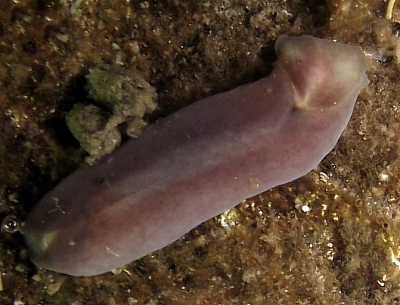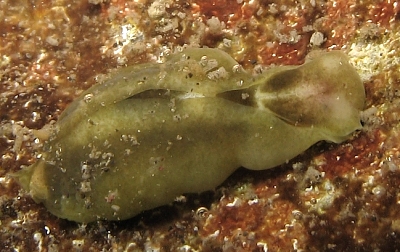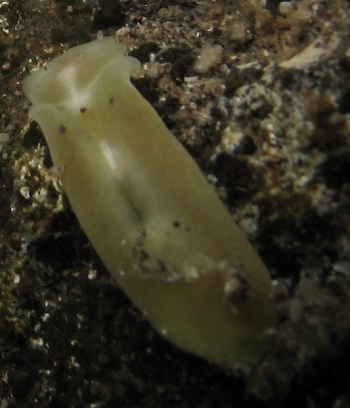Colour variation in Phanerophthalmus from Reunion.
October 12, 2007
From: Hugues Flodrops


Concerning message #15879:
Dear Bill,
Here are three pictures of probably Phanerophthalmus smaragdinus from the same pool. The colour variation from pink to green and brown-green maybe result of the algae it's feeding on.
Initially, I named the first one (grey-pink color) Chelidonura flavolobata and then Phanerophthalmus albocollaris. I don't really understand what is the very conspicious white at the end of the head? My best guess now it is Phanerophthalmus smaragdinus. Can you say if P. smaragdinus and P. albocollaris are really distinct? All the specimens are about 25-30 mm in length.
Locality: Etang-Salé Permanent Pool, 1 metre, Reunion Island, Indian Ocean, 25 september 2007, By night. Length: 25 mm. Photographer: Hugues Flodrops.
Thanks again and best regards.
Hugues.
hugues.flodrops@wanadoo.fr
Flodrops, H., 2007 (Oct 12) Colour variation in Phanerophthalmus from Reunion.. [Message in] Sea Slug Forum. Australian Museum, Sydney. Available from http://www.seaslugforum.net/find/20828
Dear Hugues,
I can't add much to my anatomical study of Phanerophthalmus in 1972. Certainly it seems to vary in colour from green or yellow to the greyish colour of one of your animals. Phanerophthalmus has a remarkable similarity in shape to an aglajid and for many years was considered a member of that family despite the fact that its internal anatomy was clearly that of a haminoeid.
Atsushi Ono's message [#1468] shows the colour variation as well and he includes an animal with a white W mark around the posterior edge of the head shield, which is the main distinguishing feature of P. albocollaris. I suspect P. albocollaris is a colour form of P. smaragdinus but unfortunately, synonymising species [that is deciding they are not different] is much more difficult than making a new species, as you have to make detailed anatomical comparisons, look at variation in colour and shape etc, etc. Of course these are the things that should have been done when the new species was proposed, but unfortunately it is often not done. As I have said on the species Fact Sheet, P. albocollaris was described from a single 3 mm long specimen, so we can't really say whether its distinct colour pattern is because it is distinct or because it is a juvenile variation of P. smaragdinus. A few other species of Phanerophthalmus have been described but there seems to be no easy way to distinguish them from P. smaragdinus on what we know of their colour and anatomy.
I can't really say if the colour of these animals is a result of the colour of their algal food. In sacoglossans the colour is often affected by the colour of the chloroplasts they acquire from their food, but in haminoeids the food is crushed and digested and chloroplasts are not retained, so they would need to have a mechanism to retain colour pigments from their food. The first step would be to find just what algae they eat. At present we don't know if they are specialist feeders or not.
-
Rudman,W.B., 1972. The herbivorous opisthobranch genera Phanerophthalmus A.Adams and Smaragdinella A.Adams. Journal of Natural History, 5: 647-675.
Best wishes,
Bill Rudman
Related messages
-
Another grass bed find from the Philippines
From: Charles Raabe, July 10, 2006 -
Phanerophthalmus smaragdinus from Reunion Island
From: Philibert Bidgrain, February 23, 2006 -
Phanerophthalmus from Japan
From: Atsushi Ono, November 1, 1999
